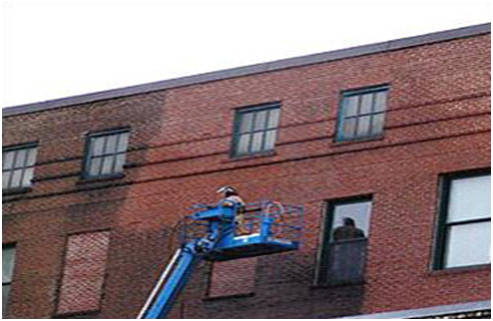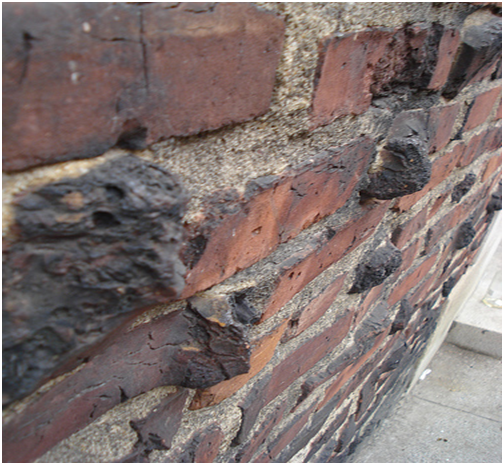You wouldn’t necessarily think that buildings would get that dirty but indeed, they do. Dirt on buildings accumulates mainly from environmental causes such as weather and man-made pollution from vehicles. Dirt can be defined as unwanted material on the surface of another material. It is important to understand the nature of the dirt and how to get rid of it, but also what’s it doing, and how removing it will affect the underlying material.
Setting about cleaning a building, first you must decide whether a building can be cleaned safely cleaned so a knowledge of both the dirt and the material it is attached to is necessary. It is important to factor in the building’s history and whether the removal of the dirt is likely to affect the masonry negatively. Even very simple buildings will have a mortar different from the stone, whilst many historic buildings comprise a variety of materials often dating from different episodes in its history.

You would think that there might be just one method for cleaning stone or brick but due to the huge variety of stones, bricks and other materials used in buildings, one type of cleaning is not going to fit all types. Often the wrong type of cleaning method has been used on all the surfaces of a building, regardless of material. Also on all buildings of the same material, regardless of their different locations. For Masonry Cleaning, visit https://www.stonehealth.com/stone-cleaning-products/
Having a brick house, you have probably noticed some problem spots in your masonry, such as mould growth or oil and paint stains. If these unsightly areas bother you, you can clean them. The most common masonry-cleaning problems and solutions are listed here:
- Oils, soot and mineral residue: Oils, soot, and powdery mineral residue pose a slightly more difficult problem as they’re embedded more deeply than moss or mildew into the pores of the masonry. This will require a solution of 1 part muriatic acid to 9 parts water to get rid of this. Add the acid to the water and apply the solution; allow it to set for about 15 minutes; then use a bristle brush to clean the affected area and rinse with fresh water.
- Fungus, moss, and mildew: a quarter of a bottle of household liquid bleach mixed into 1 gallon of warm water, applied with a stiff-bristle brush, usually takes care of these unsightly problems. When trying to destroy fungus, it’s the bleach that does the job not how hard you scrub so be sure to give the bleach plenty of time to work before scrubbing and rinsing. If not, fungus spores will remain and can grow back quickly.
- Paint: Sandblasting, wash-away, or peel-off paint removers; hand or electric wire brushing; muriatic acid washing; and power-washing are just a few of the ways that you can remove paint from masonry.

To minimize stone or brick damage from salty air and extreme weathering, you can apply a sealer. Just as you would with concrete, you need to thoroughly clean your brick and stone before applying a sealer.
